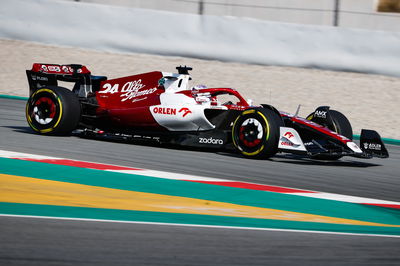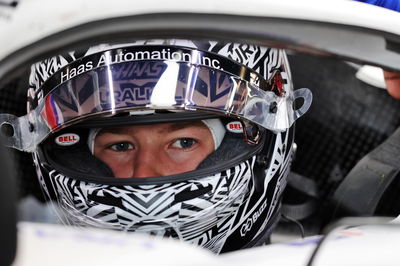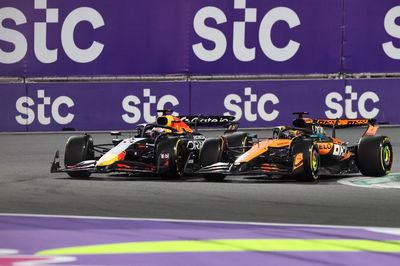Alfa Romeo ‘giving up performance’ to fix F1 porpoising issue

Porpoising has been the buzzword in the F1 paddock after the first test at the Circuit de Barcelona-Catalunya.
With F1’s new generation of cars re-introducing a ground effect floor for this year, the majority of teams have been impacted by the effect of proposing.
Cars were often bouncing down the start-finish straight on Barcelona when reaching high speeds, resulting in a loss of downforce into the next corner and potentially leading to other issues as the suspension is shaken.
Alfa Romeo was one of the teams most affected, completing only 165 laps across the three days of testing.
Speaking at the formal launch of Alfa Romeo’s new challenger on Sunday, Monchaux revealed that porpoising hampered its running on the first two days in Barcelona.
“I think the bouncing topic, which is really the topic of the week, has been causing issues mainly during day one and the start of day two,” he said. “After the fixes we had in place proved to be adequate so that was ticking the box. What happened on day three has effectively nothing to do with the bouncing, it’s more some small mechanical issues which hampered us from having a trouble-free day.
“Evidently, like all of the teams, we found a way around the bouncing during that first week which required some compromise because effectively you had to move a bit away from the optimum where you would like to have the car so if you move away from the optimum you are giving [up] performance.
“I think it’s more or less the same for all the teams and we are working very hard to find ways to have that bouncing topic under control but more importantly to be able to move back closer to what is the optimum of the car. I’m reasonably confident we will get there very soon and hopefully already at the very beginning of test two.”
Monchaux admitted that Alfa Romeo didn’t anticipate the issue of porpoising and conceded that it may need to make changes to the floor to compensate for it or run a higher ride height, thus compromising overall performance.
“To be fully transparent and honest, we didn’t expect or anticipate that, he added. “We had discussed during the last months about those kinds of phenomena that could happen but none of our tools - windtunnel and other simulation tools - were giving a hint of it. We were a bit taken aback, which I think has been the case for probably all of the teams or most of the teams.
“In itself, I would suspect that we are going to get that under control with some modifications mainly on the floor that will allow us to get a bit closer to our optimum but with the current state of the rules, I would also expect that we would have to settle slightly higher than we all thought at the beginning.
“So the question will be how much higher? Is it 3-5mm or is it 20mm? I hope it’s going to be five because the rework on the car will be less, but we will see. We can have a chat in a month’s time or so and then I will be able to give you a better, more precise answer.”












